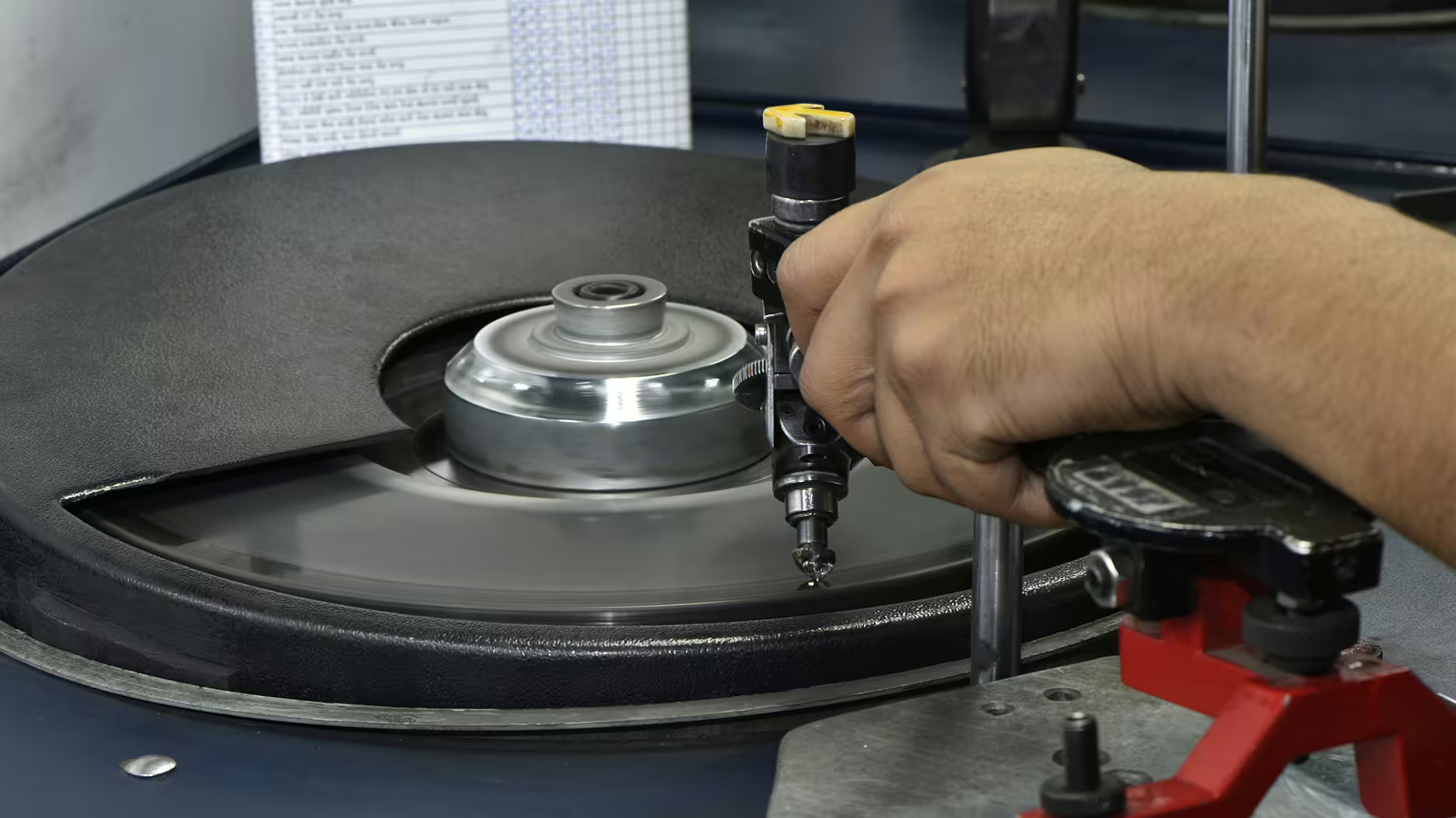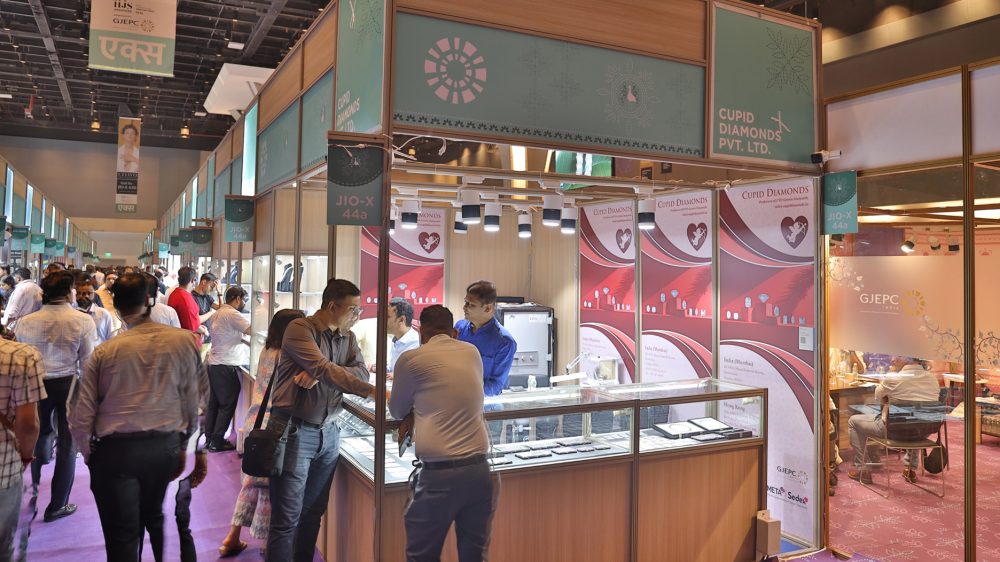Industry players have found ways to cope with market conditions while working to reshape themselves in the face of emerging realities.

Mumbai, India—The Indian diamond industry enters the fourth quarter having been on a roller coaster ride for much of the last two years.
There have been multiple twists and turns, and ups and downs, with the most recent dip spanning the past few months.
During this period, polished inventories rose despite some improvement in demand for diamond jewelry in the United States, and prices remained flat or fell further, with trends varying across sizes and qualities.
“In July/August we witnessed another wave of turbulence,” said Vipul Shah, chairman of India’s Gem & Jewellery Export Promotion Council (GJEPC).
While earlier downturns saw a coordinated response from the Indian industry, companies are now being encouraged to chart their own paths.
“We have been emphasizing the importance of self-discipline in such situations,” Shah stated.
Drawing Up Individual Road Maps
The industry has adopted a variety of strategies to cope with the current market conditions.
In late August, diamond manufacturing giant Kiran Gems declared an unprecedented 10-day vacation for its employees coinciding with the Indian festival of Janmashtami.
A few other companies did likewise, but there were also many, including larger firms, that continued their day-to-day operations without interruption.
Some already have adopted staggered working hours, shorter work weeks, or longer-than-normal vacations.
Others have adjusted operations over time and enhanced their abilities to navigate turbulent periods.
Venus Jewel is one example of such a company.
Partner Devansh Shah said the company recognizes the importance of maintaining industry confidence without compromising its core values.
“We have proactively responded to the market shifts, and remain adaptable to changing conditions, responding with agility and focus,” he explained.
This includes at present, a greater focus on the Indian market, which has remained buoyant, he noted.
Hari Krishna Exports also has fined-tuned its operations, including growing the network for its diamond jewelry brand, Kisna, in India.

Despite tough conditions overall, the company has announced an incentive program aimed at boosting productivity and enhancing the skills of its artisans.
“This has uplifted employee morale, encouraging them to improve their craftsmanship while receiving rewards for hard work,” a company spokesperson said.
Industry leaders also have welcomed the measures taken by leading miners—De Beers Group, Alrosa, and others—to regulate supply.
The latest import/export figures published by GJEPC indicate that in August, imports of rough diamonds declined 49 percent in value terms and 54 percent in volume terms (number of carats) year-over-year.
Polished diamond exports, meanwhile, were down 20 to 25 percent in value terms and 20 to 22 percent in volume terms year-over-year.
However, the value of exports in August was up 14 percent from July, indicating that conditions are improving.
‘Green Shoots’ That Need to Be Nurtured
Russell Mehta, CEO of Rosy Blue India, believes that this multi-faceted approach has helped stabilize the situation for now, and while year-end demand from the U.S. is expected to be on par with last year, the situation in China is still bad.
“The segment for smaller diamonds has been less affected, while certified goods have been hit more. Currently, we are seeing green shoots in some categories,” he said, meaning that certain categories are starting to show signs of recovery.
“These will have to be carefully nurtured going forward and it is likely that the annual Diwali break [in late October/early November] will be longer than usual this year,” Mehta continued, adding, “All eyes will be on Q1 2025.”
D. Navinchandra Jewels, which exports diamond jewelry to North America, also noted mixed trends, though it expects U.S. demand to remain stable this year.
The company reported that jewelry set with small diamonds (0.20 carats and below in SI1 and lower qualities) that are relatively lower-value items have not seen major price fluctuations for the past 18 months.
At the high end, the niche market for jewelry set with large stones (above 5 carats) also remains stable.
But in the middle segment, for jewelry using higher quality (SI1 and above) small diamonds (0.20 carats and below) and jewelry set with certified goods (0.30-5 carats), there has been more price volatility, and this may continue for some time.
Punit Mehta, D. Navinchandra Jewels partner and CEO, said, “Now there is a low-but-steady demand as U.S. retailers restock for the coming season. ”
“They are now holding lower inventory of natural diamond jewelry and seem to be buying only what they need. Maintaining low inventory levels at all segments of the diamond industry seems to be the main focus for most players who want to protect their bottom line.”
A Longer-Term Perspective
GJEPC Chairman Vipul Shah stressed that steps to self-regulate the supply side of the business must be combined with campaigns to boost consumer demand.
“GJEPC is formulating plans to do this in the key markets in collaboration with other stakeholders including the Natural Diamond Council and leading retailers. We hope to roll out promotions at appropriate levels during peak seasons in each of these markets soon.”
It is also necessary to look beyond short-term measures and plan for the future, many feel.
“At an industry level there may be some consolidation, while individual companies will have to ‘right-size’ their operations to optimum levels.” — Russell Mehta, Rosy Blue
“The industry needs to recognize ground realities,” said Rosy Blue’s Russell Mehta.
He foresees a “new normal” emerging, with the market for loose polished hovering at current levels over the next few years.
“The pipeline will have to deal with this, and not react to immediate ups and downs,” he said.
“At an industry level there may be some consolidation, while individual companies will have to ‘right-size’ their operations to optimum levels to retain maneuverability in the face of unexpected scenarios.”
There are indications that these longer-term processes already have been set in motion by the winds of change, though it may take more than a few years for a stable equilibrium to be reached.
Exports of polished diamonds from India remain 20-30 percent below pre-COVID peaks, and it is becoming increasingly clear that there may be no going back.
New investments in cutting and polishing operations have plateaued over the past few years.
Meanwhile, the infrastructure and manpower that has been made redundant by the slowdown have been redeployed into the rapidly expanding lab-grown diamond business.
The industry is definitely reshaping itself, and the process may become more organized once a proposed government-backed taskforce to discuss policy measures and other steps takes shape.
Supply-Side Dynamics
The pending sale of De Beers also will almost undoubtedly affect the diamond industry’s future.
Currently, most Indian diamantaires have taken a wait-and-watch approach.
They feel that a change in ownership will not affect mining operations in the near-term, though fresh investments and expansion may remain on hold for a while.
Yet, if rough can be mined and sold profitably, any new owner will surely find ways to raise the required capital, they pointed out.
Russell Mehta further noted that the planned increase in allocation of Botswana rough, from 30 percent to 50 percent of total production over 10 years, to the government-owned Okavango Diamond Co. bears watching.
The increased allocation is one of the terms of the Botswana government’s new 10-year sales agreement with De Beers Group that was reached last July but, as of press time, has not been officially finalized.
“A state-run company may have larger social objectives, unlike a private enterprise that aims to maximize shareholder value,” he said.
“How will this rough be distributed—through fixed allotments to long-term clients or auctions—at what prices, and what will be the share of global sales vis-à-vis beneficiation, all these could impact the pipeline.”

